Better than takeout, my Prawn Hokkien Noodles are ready in 10 minutes. Stir-fried with Chinese green leafy vegetables, cabbage and the best chilli paste - sambal olek, these thick, chewy, golden noodles are spicy and delicious!
Jump to:
🥡 What are Hokkien Noodles?
Hokkien noodles are thick, chewy, wheat noodles punctuated by their yellow colour that comes from making the noodle dough with lye water. Hokkien noodles are used in fast, hawker-style stir-fry noodles in South East Asia. In fact, Hokkien Mee cooked using different meats are found throughout Malaysia and Singapore. The noodles are dark, sweet and salty and often stir-fried with Asian leafy greens and cabbage for a very satisfying meal.

🍤 Why you'll love my Prawn Hokkien Noodles?
There are so many reasons to love this brilliant noodle dish.
- They taste just like your favourite local takeout but much healthier.
- Quick, filling weeknight meal option.
- Packed with vegetables and protein.
- This is an excellent prawn recipe for lovers of seafood.
- Leftovers are great for packed lunchboxes.
- Can be made ahead. Keeps well in the fridge for up to 3 days.
📝 Ingredients and Substitutions
Here is what you'll need to make these Prawn Hokkien Noodles
- Prawns - I try to source wild-caught prawns whenever I can. But, when I can't I always buy Australian prawns. It is important to use raw prawn meat for this recipe as it is a quick-cooking dish, and prawns must be just cooked to be tender and succulent. Using cooked prawns renders them overcooked and a tad chewy after stir-frying.
- Gai lan - Gai lan, also known as Chinese broccoli or Chinese kale is a vibrant green leafy vegetable sold in bunches like spinach. It has big, glossy, dark green leaves and thick stems. The leaves and stems are edible and an excellent source of folate, iron and various vitamins. If you can't find it, substitute it with choy sum (Chinese flowering cabbage), bok choy or broccoli rabe.
- Cabbage - Green drumhead cabbage is best for this recipe. You can substitute it with savoy cabbage or wombok.
- Hokkien noodles - Hokkien noodles are thick, chewy, wheat noodles that are available as cooked noodles in vacuum packs at Chinese grocers or Asian sections of supermarkets. They are yellow. You can substitute it with udon noodles.
- Kecap manis - Kecap manis is a dark, sweet Indonesian soy sauce. It is thick and adds a good depth of flavour and colour to the noodles. I use the ABC brand. If you can't find it, substitute it with regular soy sauce and honey or maple syrup.
- Soy sauce - This dish calls for light soy sauce. This is thin in consistency and less salty than darker and thicker soy sauce.
- Oyster sauce - Regular oyster sauce can be substituted with vegetarian oyster sauce. Hoisin sauce also works as a substitute.
- Sambal Oelek - Sambal Oelek is an Indonesian spice paste made of red chilli peppers. It is fiery and spicy. You can substitute it with Sriracha or Chinese chilli oil.
🔥 How to make Prawn Hokkien Noodles
- Add cooked Hokkien noodles from the fridge into a pot of boiling water.
- Cook as per the packet instructions until noodles are loosened and heated through. Drain water and set aside.
3. Wash and dry the gai lan.
4. Trim the ends off and discard. Chop the entire bunch in 2 inch pieces.
5. Stir fry prawns for a couple of minutes until they start turning opaque.
6. Add garlic and cook for a few seconds until fragrant.
7. Add vegetables and cook for a couple of minutes until gai lan is glazed and a shade darker.
8. Add noodles and sauce. Mix well. Stir-fry tossing constantly for a few minutes until piping hot.
🥢 Serving Suggestions
Serve the Prawn Hokkien Noodles as part of an Asian banquet meal. Put these delicious Asian recipes on the menu along with the noodles
- Sweetcorn Chicken Egg Drop Soup
- Vegan Chinese Chilli Eggplant
- Asian Smacked Cucumber Salad
- Cauliflower Nasi Goreng
👩🏻🍳 Recipe FAQs
Both gai lan and choy sum are Chinese leafy vegetables sold in bunches. Gai lan is also known as Chinese broccoli or kai lan. Choy sum is a Chinese flowering cabbage and is distinguished by the presence of bright yellow flowers amongst the big green leaves. Gai lan has a cleaner, sweeter taste whereas choy sum is more bitter.
You can, but if you do, add them right at the end. Otherwise, you'll end up getting overcooked and chewy prawns.
You can substitute Hokkien noodles with cooked and packaged lo-mein or chow-mein noodles. But the best substitute is udon noodles. As udon noodles are chewy and thick just like Hokkien noodles.
More Noodle Recipes To Love
Recipe
Hungry For More Recipes? Subscribe to my newsletter. Check out Facebook, Instagram and Pinterest to see everything I share! And if you love cooking and new cookbooks, join my free Cooking Club on Facebook!

Ingredients
- 2 tbsp grapeseed oil, (or any neutral oil)
- 250 g (0.55 lb) raw prawns, heads trimmed and peeled
- 4 garlic cloves, minced
- 1 bunch gai lan, (Chinese broccoli)
- 1 cup shredded cabbage
- 500 g (1.1 lb) hokkien noodles, cooked
- 1 tbsp kecap manis
- 1 tbsp light soy sauce
- 2 tbsp oyster sauce
- 1 tbsp sambal olek, (see notes for substitutions)
Instructions
- Heat oil in a wok on high. Add the prawns. Stir-fry for 1-2 minutes, tossing constantly until prawns start turning opaque.
- Add garlic. Toss and cook for 30 seconds until garlic is fragrant and starting to turn golden.
- Add gai lan and cabbage. Stir-fry for a minute until veggies start wilting.
- Add cooked noodles, kecap manis, soy sauce, oyster sauce and sambal olek. Toss and mix well. Cook for 1-2 minutes until everything is evenly coated and heated through.
- Remove from heat. Serve hot.



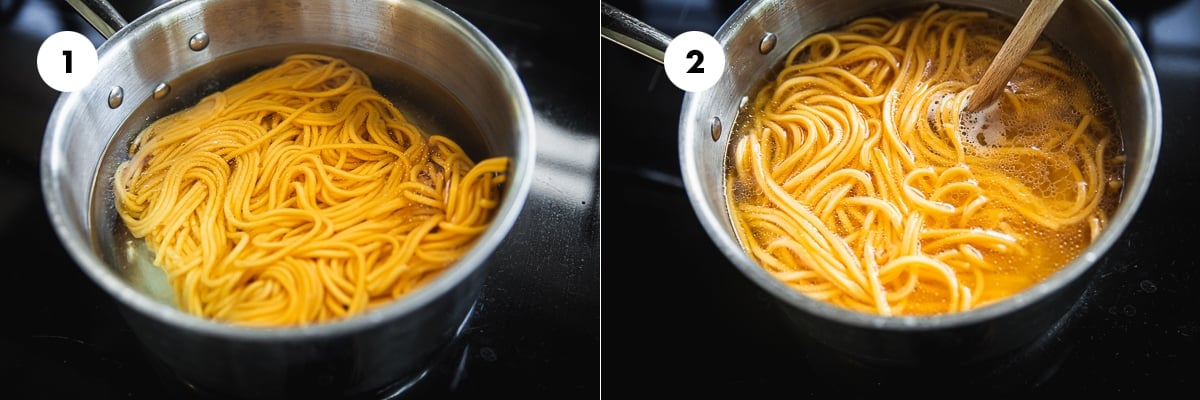

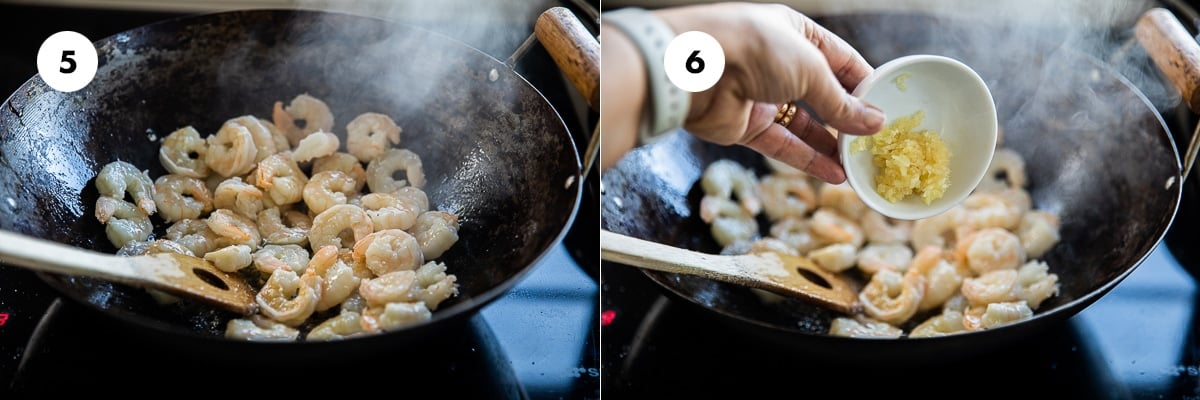










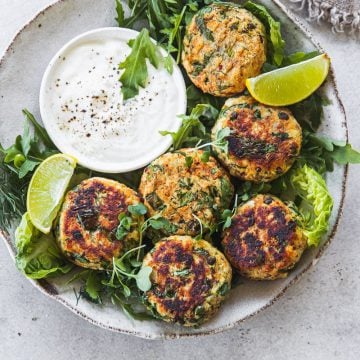






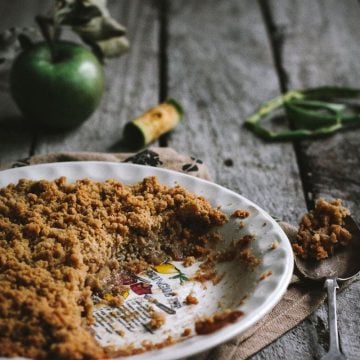

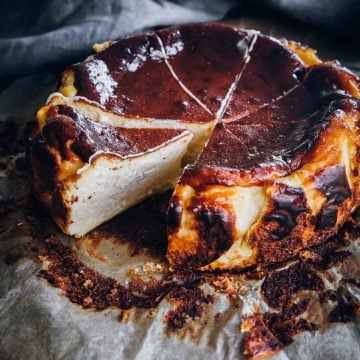

Soooooo delicious !!